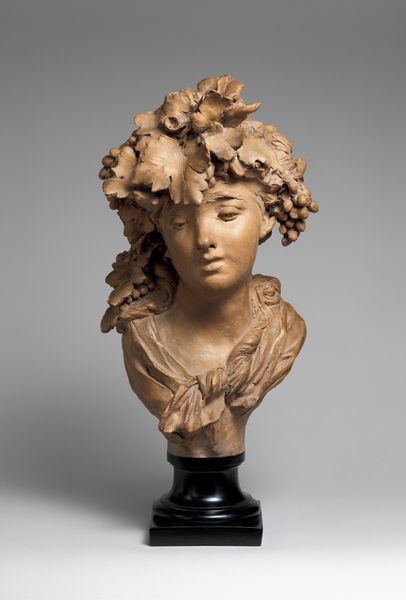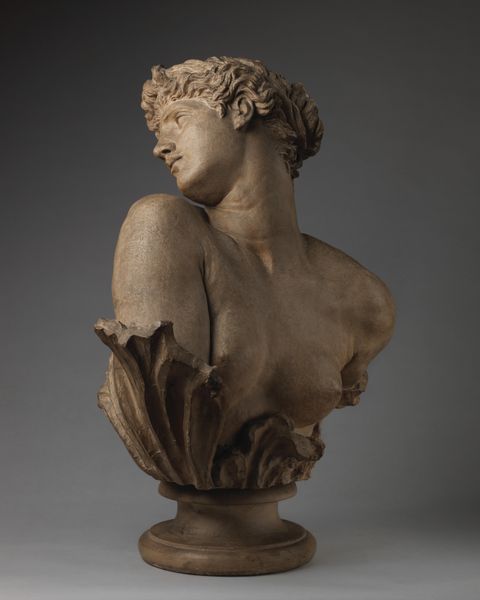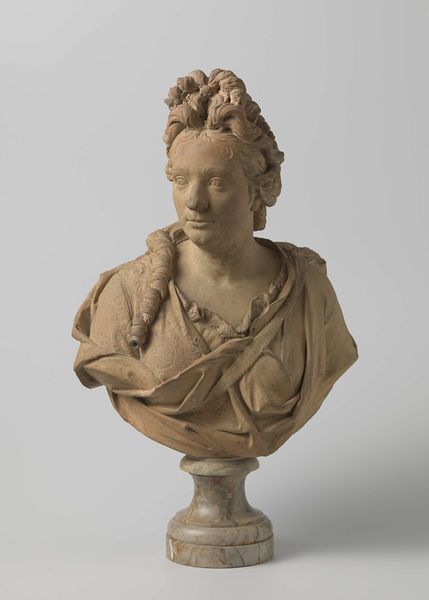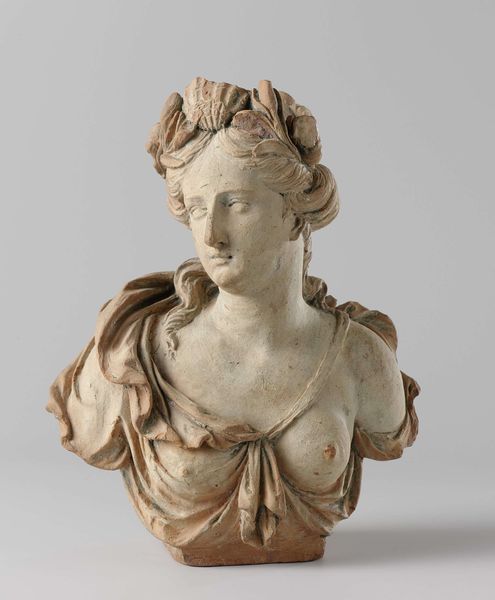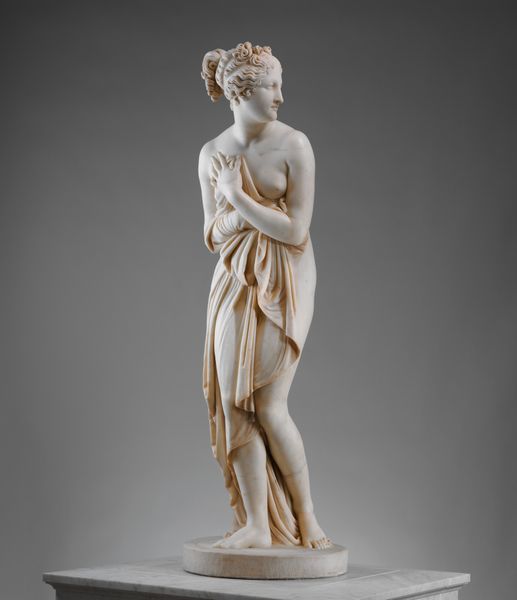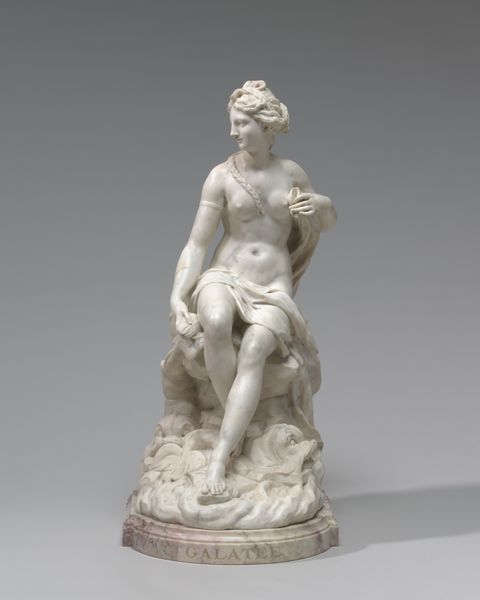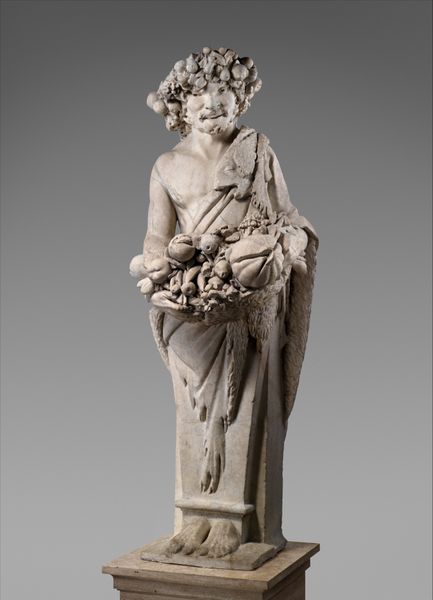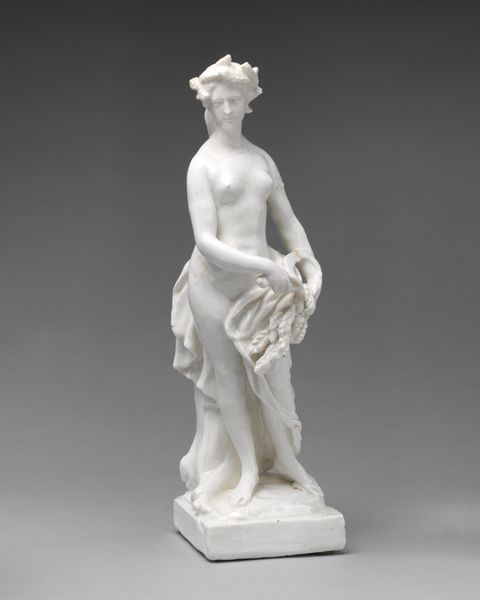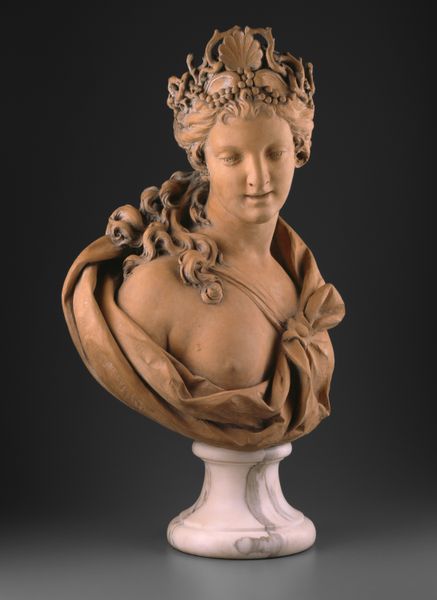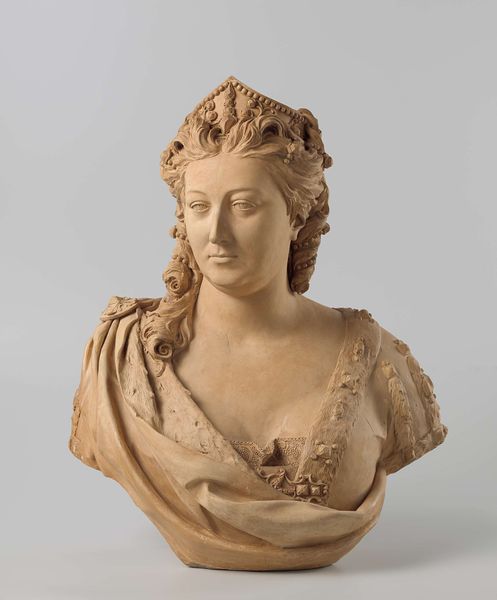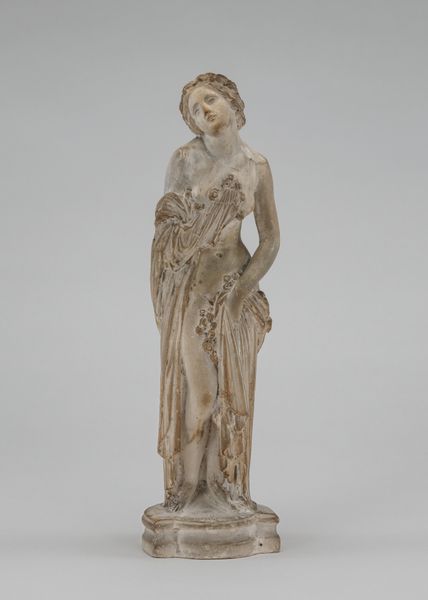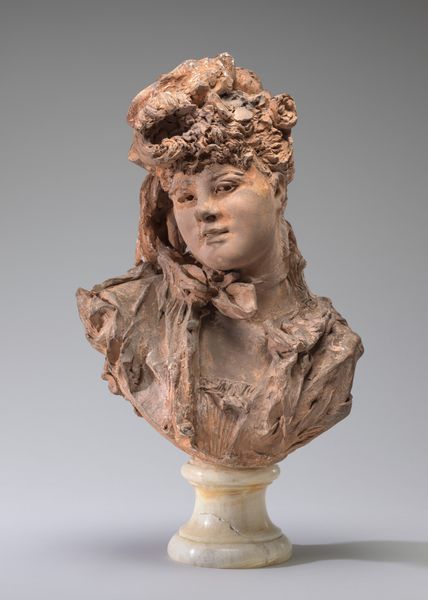
Dimensions: 6 3/16 × 5 5/8 × 3 1/8 in. (15.7 × 14.3 × 7.9 cm) without the attached marble base; diameter of base is 4 1/2 in. (11.4 cm) with height at 4 1/4 in. (10.8 cm)
Copyright: Public Domain
Editor: Here we have Clodion’s terracotta “Bust of a Satyr” from 1770-1775, currently at the Art Institute of Chicago. There’s something mischievous, even unsettling, about that expression. How do you interpret this work? Curator: That unsettling feeling is key! This bust presents us with an interesting lens through which to examine societal attitudes towards mythology and the body. Satyrs, traditionally associated with debauchery and unrestrained desire, were often used as allegories for human folly. But consider this: whose folly are we really talking about? Was Clodion commenting on the aristocratic excesses of the time, projecting blame onto a mythical being instead of addressing the actual power structures enabling such excess? Editor: So, the satyr becomes a kind of scapegoat? Curator: Precisely. And within the framework of the Rococo period, with its emphasis on ornamentation and sensuality, this bust can be viewed as a deliberate commentary on the performance of masculinity. What is considered masculine, and who gets to define those boundaries? Notice the effeminate features coupled with symbols of virility. It challenges us to dismantle binary thinking around identity and to question what constitutes acceptable behaviour based on gender and class. Editor: It’s fascinating how a mythological figure can be used to dissect complex social issues. Curator: Absolutely. By engaging with art history through a contemporary lens, we can unravel the power dynamics embedded within these seemingly innocent depictions and confront uncomfortable truths about ourselves and our societies. Does this perspective change your view of the bust? Editor: Completely. I came in seeing a funny face, now I’m thinking about class and gender. Curator: Wonderful! That’s the power of intersectional analysis—revealing hidden dialogues within the art.
Comments
No comments
Be the first to comment and join the conversation on the ultimate creative platform.
